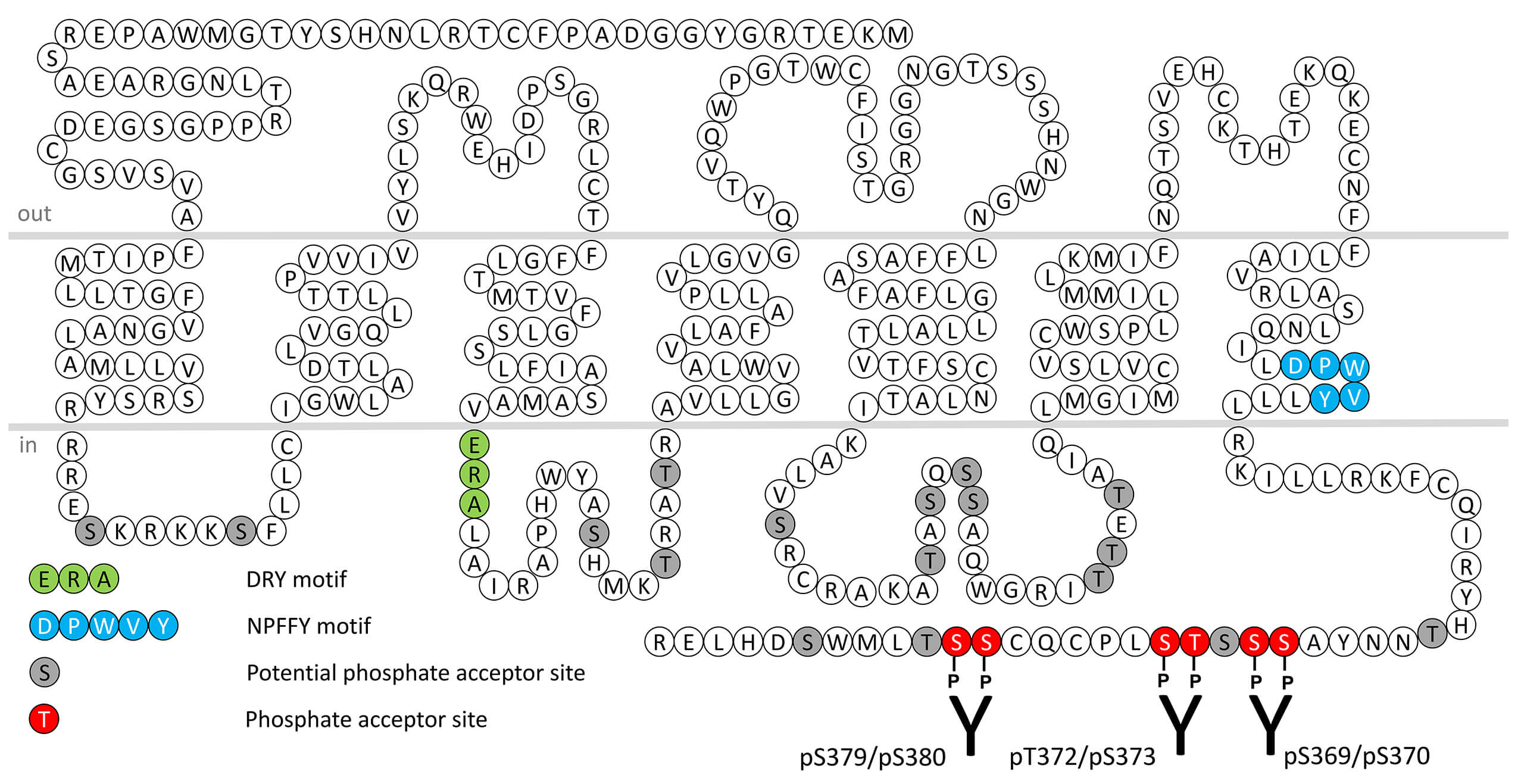EP3 Receptor Phosphorylation Assays

EP3 receptors mediate a wide spectrum of actions: contraction of smooth muscle, enhancement of platelet aggregation, inhibition of autonomic neurotransmitter release, inhibition of gastric acid secretion, and inhibition of fat cell lipolysis. EP3 receptors are subject to splice variance at the C-terminus and, to date, ten isoforms have been identified across species, six of these being expressed in man. These isoforms differ in their G-protein coupling. Several chemical classes of selective EP3 receptor antagonists have emerged. EP3 receptor antagonism has been investigated for inhibition of platelet activation in atherothrombotic disease. EP3 receptors are regulated by phosphorylation of carboxyl-terminal serine369/serine370 (pS369/pS370-EP3), threonine372/serine373 (pT372/pS373-EP3) and serine379/serine380 (pS379/pS380-EP3). This nomenclature refers to the canonical isoform of human EP3 receptor. This phosphorylation motif is highly conserved across species but corresponds to pS344/pS345-EP3, pT347/pS348-EP3 and pS354/pS355-EP3 in mice and rats. For more information on prostanoid receptor pharmacology please refer to the IUPHAR database. For further reading refer to:
Coleman RA, Smith WL, Narumiya S. International Union of Pharmacology classification of prostanoid receptors: properties, distribution, and structure of the receptors and their subtypes. Pharmacol Rev. 1994 Jun;46(2):205-29. PMID: 7938166.
Woodward DF, Jones RL, Narumiya S. International Union of Basic and Clinical Pharmacology. LXXXIII: classification of prostanoid receptors, updating 15 years of progress. Pharmacol Rev. 2011 Sep;63(3):471-538. doi: 10.1124/pr.110.003517. PMID: 21752876.
 pT372/pS373-EP3 Phosphorylation Assay Kit
pT372/pS373-EP3 Phosphorylation Assay Kit 

